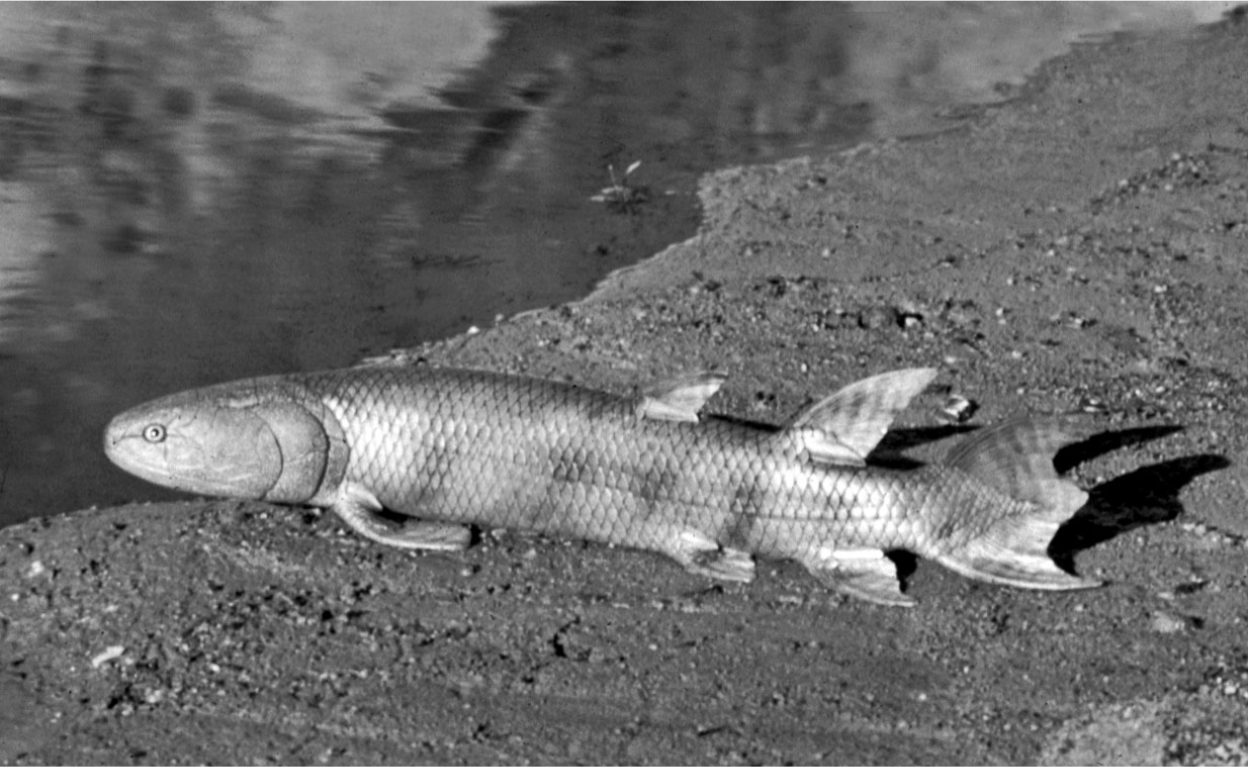Evidence of Human Evolution from Fish
The short answer is “yes,” humans really are descendants of fish. Although it seems strange that we have evolved from aquatic gill-bearing animals, scientists have found anatomical similarities in both fossils and present day fish that prove human evolution from fish (2, 6). Evolution plays a key role in the changes of organisms over generations and their adaptation to new environments. Charles Darwin, an English naturalist, was a fundamental contributor to the science of evolution as he carefully studied Galápagos finches during his travels on HMS Beagle during the 1830s (5). In 1859, Darwin published his book, The Origin of Species, proposing his hypothesis of how evolution occurs (5). Natural selection, a key Darwinian principle, is when individuals with more favorable heritable traits are more likely to survive and reproduce offspring that inherit these favorable traits. Thus, over time, favorable heritable adaptations will accumulate to fit the individual’s way of life (5).
Using homology, fossils, embryology, and genetics, scientists have a better understanding of how humans have evolved into the mammals they are today. For instance, embryology shows that our philtrum, a groove on our top lip beneath our nose, is a remnant of the process forming our face (1). During the development of the human face, the human embryo originally has eyes on the side of the head and lips and nostrils on the top, much like the faces of fish we see today (2). These three structures eventually rotate and fuse together in an unborn fetus to the position of our facial features we have now (2). The philtrum has no obvious current function in humans and is simply a remnant of the formation of our faces (1, 2).

Similarly, our lips, jaws, and palates begin as gill-like structures on our neck, but move around until all plates of tissue and muscle of our face fuse together almost seamlessly (2). These gill arches, or bony loops in the embryo’s neck, are homologous in both human and fish embryos (1). In fish, the gill arches develop into the gill apparatus to help with breathing, but in humans, gill arches become the bones of our lower jaw, middle ear, and larynx (1). Through fossil evidence of the prehistoric eusthenopteron fish, 370 million year old sarcopterygian, it was observed that the hyomandibula, a small part of the jawbone, poked into the fish’s gills (1). Over the course of millions of years, the same bone formed a cavity by the ear in descendents of eusthenopteron fish and evolved into the human stape, a stirrup-shaped bone in the middle ear that transmits sound vibrations (1, 4). As a result, the similar structures of gill arches help with human’s sense of hearing and ability to speak.

Furthermore, although fish do not have fingers, they do have the gene that makes the development of them possible. In the 1980s, scientists discovered the Sonic Hedgehog (SHH) gene. SHH codes for the protein that functions as an essential chemical signal for embryonic development, influencing cell growth and specialization (3). When scientists mutated the SHH gene in different fish, the organisms grew extra fins and fingers (1). Scientists speculate that land organisms evolved when ancient fish with mutations for fingers and the SHH gene gained the ability to crawl (1).
Over the course of millions of years, structural evidence demonstrates that humans have evolved from fish. Our philtrum is a remnant of our face changing during our embryonic stage, our sense of hearing and ability to speak is possible with gill arches, and our fingers are coded with the SHH gene that fish originally have. However, scientists are not done studying human evolution. When embryology was invented, it played a fundamental role in helping scientists find similarities between fish and human embryos, which couldn’t be studied prior. Similarly, with the invention of new technologies, future discoveries will continue to influence our understanding of human evolution.

